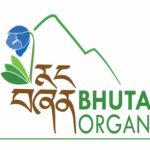Background
Potato is and will continue to influence the socio-economic changes of a large proportion of the rural population, as well as influencing nutrition, employment opportunities and generating private sector development opportunities. The National Potato Programme in Bhutan has been extremely dynamic over the past four decades with strong impacts on the overall production systems, driving the change from subsistence farming to a market oriented production system and also changing the consumption habits of a large segment of the Bhutanese population. At the national and international level it will compete with other potential agricultural cash crops. The importance of potato for local consumption will increase further with higher consumption levels and higher percentage contribution on agricultural products sold. The crop is very adaptable and can be cultivated from 200 masl up to 4500 masl and thus, it is the single commodity grown in all 20 Dzongkhags. However, the main potato production areas are concentrated in the altitude range of 1500 m to 3500m.
Contribution to national economy
Potato is the most important cash crop for households above 2500m altitude and also the most important coping mechanism during food shortages. On an average, potato is cultivated on 13,041 acres of arable land and average productions stands at 51,762 MT between 2006 and 2019. Potato engages about 21% of country’s farming households who directly depend on potato for their livelihood. Potato is an emerging market-oriented crop in Bhutan, which on an average generates annual income of Nu. 358.63 million through the average export of 21,306 MT from 2006 to 2019. The rest of 30,456 MT was available for domestic consumption and thus the average per capita available for consumption is estimated at 25.9 kg/year. Considering the favourable climatic conditions, the high yield potential, its affordability, high nutritional qualities and high consumer preference, potato is expected to have far higher growth rates than cereals in the near future.
Mandates and key objectives
- Design appropriate policies, plans, strategies and guidelines for potato crop development utilizing an innovative and participatory research and development approaches.
- Execute of existing policies, plans, strategies and directives for potato crop development by way of generating and dissemination varietal and other technologies, in a participatory manner, to enhance food security of the Bhutanese farmers and consumers.
- Enhance productivity through generation and promotion of high-yielding, late-blight resistant and biofortified (teraploid) varieties for organic and conventional farming with an emphasis on shorter duration and early tuberization germplasm.
- Generate suitable climate resilient varieties for Bhutanese agroecologies (low-, mid- and high-altitudes) which are tolerance to drought, heat and cold to adapt to the emerging challenges on climate change.
- Document and publish research findings and extension materials in an appropriate and accessible forum for the use of stakeholders.
- Organize and conduct interaction workshops, trainings, demonstrations and field-days, exhibitions to share research findings and disseminate technologies to farmers, extension workers, policy-makers, planners, and researchers at regional and national levels.
- Gather and maintain data on potato productivity and production from across the country to facilitate evidence-based planning and development interventions.
- Coordinate with relevant national institutions for the development for improved crop nutrition production, crop protection and storage and value-addition, and marketing technologies.
- Liaise and collaborate with national and international institutions for sharing of technologies, publications and experiences within the established norms.
640 total views, 2 views today



